
12 Best Lunch Spots In Napa
Best Lunch In Napa – Our 12 Favorite Spots! Lunch is a must when you’re out wine tasting! Whether you’re in the mood for a
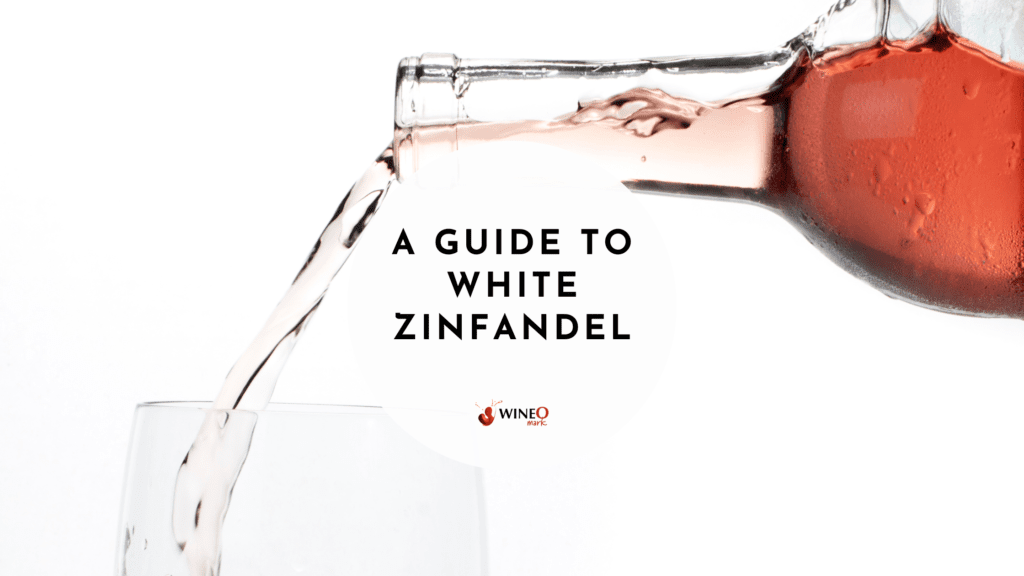
Quick Overview: Sweet, Fruity, and Cheap! The wine was invented in 1975 and quickly became a favorite in the 1980s and 1990s. It then had a decline in popularity, but it is still considered the wine that introduced many Americans to drinking wine. Currently, there is still a market for this type of wine; however, it only comprises a very small percentage of the total wine market.
What is it? How is it made? Why did people love it so much? These are questions that we will answer in this White Zinfandel wine guide.

White Zinfandel is a type of Rosé wine that is made from the red Zinfandel grape. It’s usually made in a blush style, which means that it has a pink color. There are sweet and fruity flavors of strawberries, raspberries, and other red fruits. Plus, it has a low alcohol content, usually around 10%, making it a perfect wine for casual drinking and social occasions. Therefore, some consider it a sweet “fruit punch” with alcohol for adults.
The name “White Zinfandel” came about when the creator, Bob Trinchero, was trying to find a way to satisfy the regulators. So he simply put it together, the wine was a white wine (Rosé was not a category at the time) and made from Zinfandel grapes.
Though both white and red Zinfandel are made using the same Zinfandel grapes, the distinctions come from how they’re cultivated, when they’re harvested, and how they are made at the winery.
The Zinfandel grapes used for making white Zinfandel wine usually come from large producing vineyards, grown in warm climates.
Then, the wine grapes are pressed ahead of fermentation and is the first step in the winemaking process. Because only a small quantity of the red color are released from the grape skins when wine is pressed, it has a slight pink color.
And this makes White Zinfandel wine a Rosé wine.
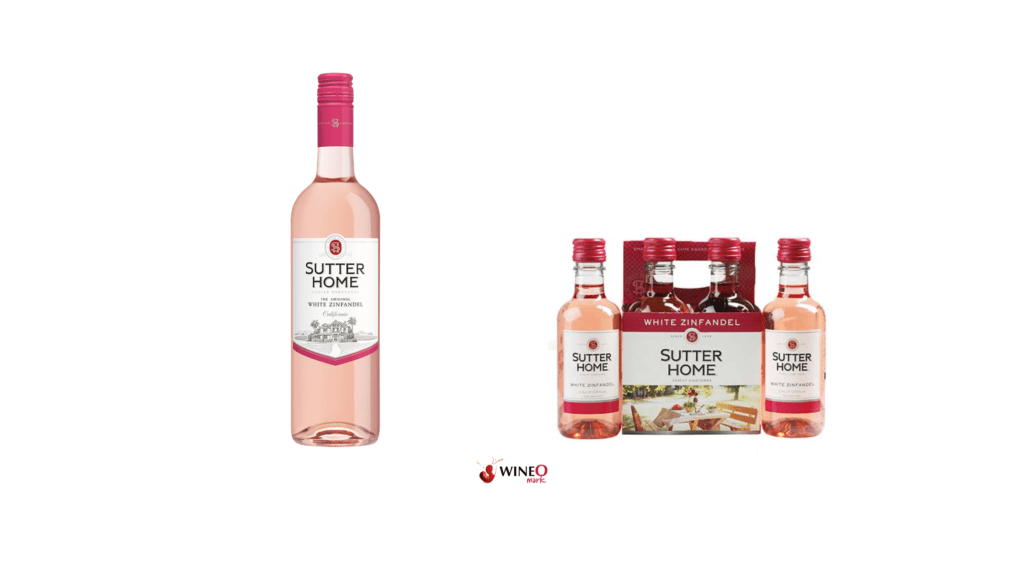
The wine was invented in the 1970s by Bob Trinchero of Sutter Home Winery. At first, it was an error. The fermentation process was halted early (stuck fermentation), which left 2% residual sugar in the wine and a pink color. This gave the wine a sweetness that was unexpected but delighted by many customers.
They only made around 200 cases to begin with, but at that time people kept coming back for this “blush” wine that had a sweet, fruity taste. Sutter Home White Zinfandel wine sells out in 1976.
In the Trinchero Family book, he defended his decision to produce the wine: “If we would have listened to the wine critics years ago, we would have never made white Zinfandel, but the people with the money (our customers) wanted it, and that was good enough for us.”
So by listening to his customers, his wine exploded and White Zinfandel quickly became extremely popular in the 1980s and 1990s. And it was one of the most popular domestic wines by the late 1980s.
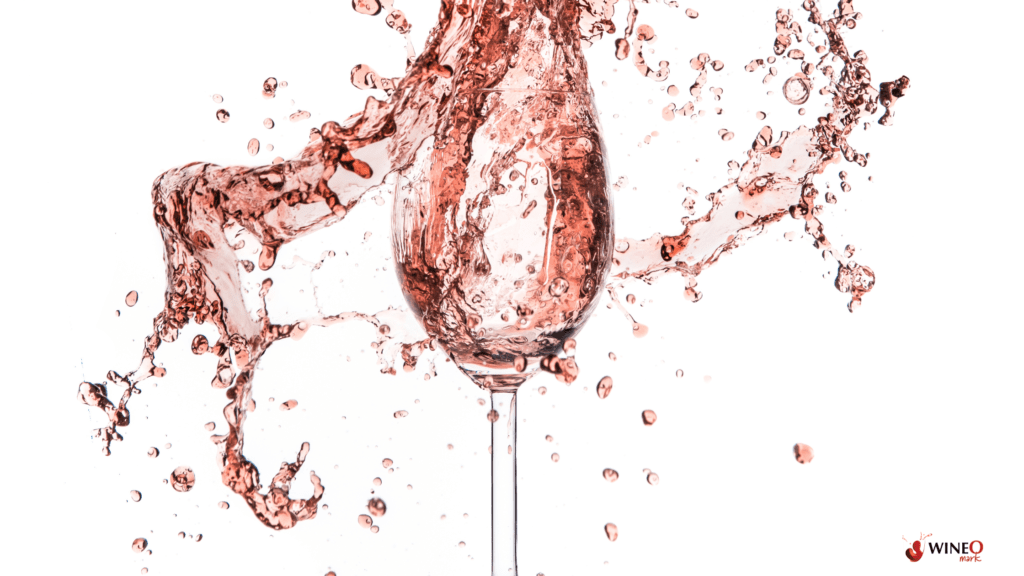
Red Zinfandels did not attract interest from many consumers in the 1970s due to a combination of high alcohol content and taste. Following this, Sutter Home made the unintentional discovery. And the wine was sweet and fruity, as well as inexpensive, making it very easy to drink.
Not long after Sutter Home’s discovery, other wineries began to follow suit and bottle their own surplus red wine juice as “White Zinfandel.” Because it was inexpensive to produce, this newly popular wine quickly became one of the most affordable wines in the wine shop.
And it soon became the best-selling box wine in the United States.
Despite its popularity, white Zinfandel has been the subject of some controversy in the wine world. Some wine experts argue that it is not a “real” wine because it is made from a grape that is traditionally used to make red wine. They also criticize its sweetness, claiming that it masks the flavor of the grape.
However, others argue that white Zinfandel is a legitimate wine that deserves to be appreciated for what it is. They point out that it has its own unique flavor profile and that its sweetness can be an asset when paired with certain foods. They also note that it has helped to introduce many people to the world of wine, making it an important wine for the industry.
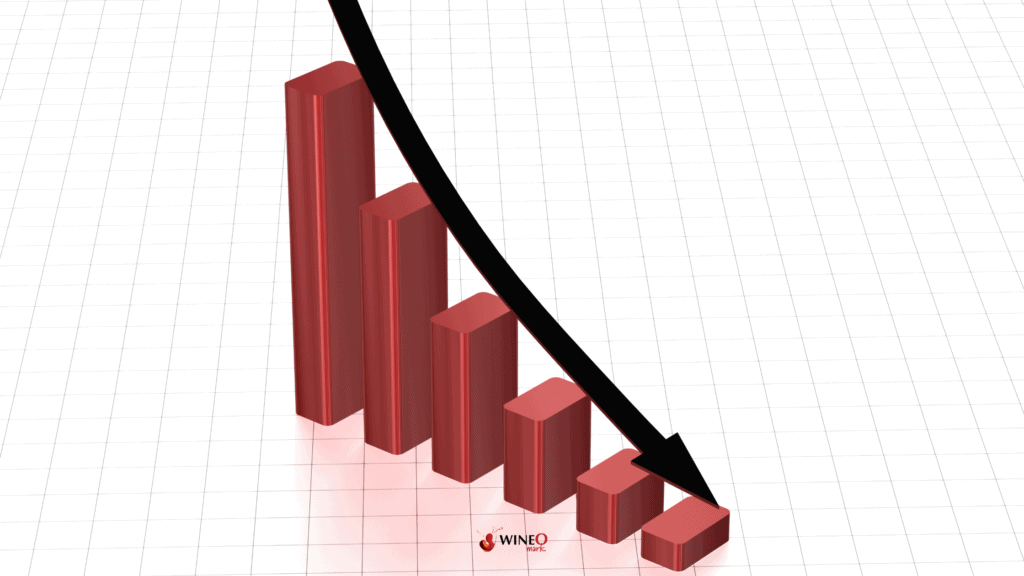
Chardonnay in the late 1990s became the most popular wine. As American taste shifted towards less sweet and more traditional wines, people became more interested in dry varieties.
Plus there was more competition from other off-dry(sweet) wines like Moscato. Also people started enjoying more crisp and refreshing Rosé wine, that was not as sweet as a White Zinfandel wine.
And by then, many wine enthusiasts and wine connoisseurs considered White Zinfandel wine not a true wine– deeming it only fit for wine beginners or those who don’t typically drink wine. And eventually people just thought of White Zinfandel as a sweet and cheap wine.
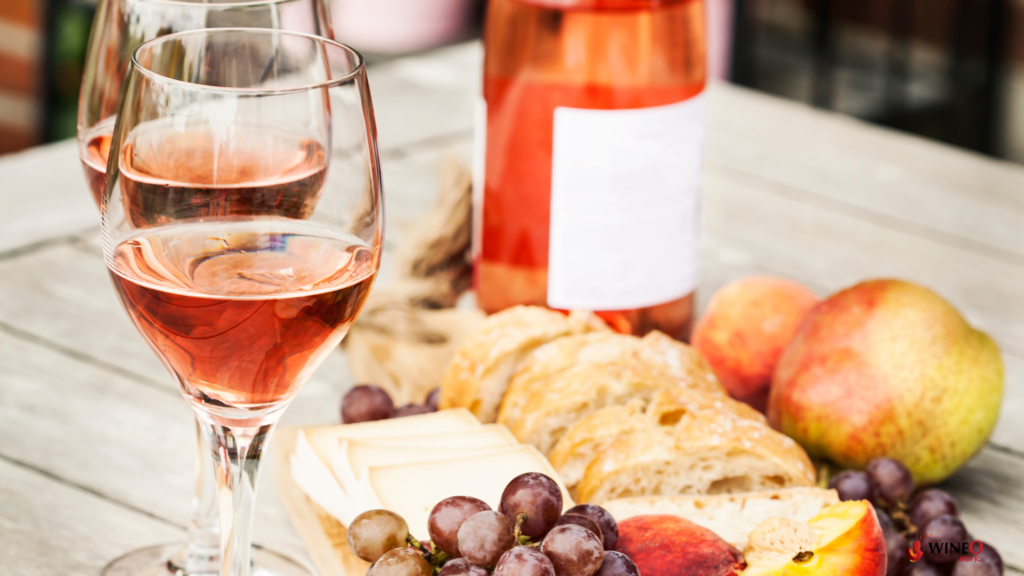
White Zinfandel is a versatile wine that can be paired with a wide range of foods. Its sweetness and lightness make it an excellent choice for spicy or flavorful dishes, as it can help to balance out the heat or intensity of the flavors. Here are some food pairings that can enhance the flavors of white Zinfandel wine:
Spicy Asian cuisine: White Zinfandel’s sweetness can help tame the spiciness of dishes like Thai curry, Korean barbecue, or Indian vindaloo.
Grilled meats: The fruity flavors of white Zinfandel can pair well with grilled chicken, pork, or beef. It can also be a good match for barbecue or smoked meats.
Seafood: White Zinfandel’s acidity can help to cut through the richness of seafood dishes like crab cakes, shrimp scampi, or grilled salmon.
Pasta with creamy sauces: White Zinfandel’s sweetness can complement the richness of pasta dishes with creamy sauces, like fettuccine Alfredo or carbonara.
Pizza: White Zinfandel can be a good match for pizza with spicy toppings like pepperoni, spicy sausage, or jalapeno.
Cheese: White Zinfandel can pair well with a variety of cheeses, from soft cheeses like brie to fresh goat cheese.
Fruit-based desserts: The sweet and fruity flavors of white Zinfandel can pair well with desserts like fruit tarts, berry pies, or peach cobbler.

White Zinfandel was the most popular wine back in the 80s and 90s and still has a niche in the market today. Although many people still enjoy White Zinfandel wine, there are other types of sweet wines that may be more to your taste. So here are some White Zinfandel substitutes:
White Zinfandel is a type of Rosé wine made from the Zinfandel grape. It is often referred to as a “blush” wine due to its light pink color. While it is technically a Rosé wine, it’s typically sweeter and less complex than other types of Rosé wines.
The recommended serving temperature for white Zinfandel is between 45 and 50 degrees Fahrenheit (7 to 10 degrees Celsius). Serving the wine too cold can dull its flavors and aromas, while serving it too warm can make it taste overly alcoholic and cloying.
To achieve the optimal temperature, you can refrigerate the bottle for about 2 hours before serving or place it in an ice bucket with ice and water for about 30 minutes. Alternatively, you can use a wine chiller or sleeve to cool the bottle to the desired temperature.
It’s a sweet wine.
Because it’s easy and inexpensive to produce.
White Zinfandel is an inexpensive wine because it’s made using a less expensive winemaking process and the wine grapes used for White Zinfandel are often grown in large quantities and can be harvested at a high yield, which helps keep the cost of production low.
Furthermore, the fermentation process used to make White Zinfandel is relatively simple and does not require aging. And this means that it can be bottled and sold relatively quickly after production, reducing the overall cost of storage and aging.
Yes White Zinfandel is a Rosé, but it’s typically sweeter.
In my opinion, yes White Zinfandel is sweet and very cheap. It has a flavor of sweet fruit juice with alcohol. But the fact is, it did help introduce many Americans to wine. And it helped many wineries stay afloat during that time by having a product that was very much in demand.
White Zinfandel holds an important role in US wine market history, and for that reason, I respect it. However, if I have a choice between sweet wines, White Zinfandel wouldn’t be my first, second, or third pick.
That said, I would still drink it if offered because at the end of the day, it’s an easy-drinking wine with fruity sweet notes.

Best Lunch In Napa – Our 12 Favorite Spots! Lunch is a must when you’re out wine tasting! Whether you’re in the mood for a

North Coast Wine Co. Outerbound Pinot Noir – WineO Mark Review Wine Stats Grape Variety: 100% Pinot Noir Vintage: 2019 ABV: 14% Wine Region: North Coast,

Böen Pinot Noir – WineO Mark Review Wine Stats Grape Variety: 100% Pinot Noir Vintage: 2021 ABV: 14.6% Wine Region: California Flavor Profile: Cherry, raspberry, blackberry,

Merry Edwards Sauvignon Blanc – WineO Mark Review Wine Stats Grape Variety: 100% Sauvignon Blanc Vintage: 2022 ABV: 14% Wine Region: Russian River Valley, California

The Hess Collection Allomi Chardonnay – WineO Mark Review Wine Stats Grape Variety: 100% Chardonnay Vintage: 2019 ABV: 14.3% Wine Region: Napa Valley, California Flavor Profile:

Stags’ Leap Chardonnay – WineO Mark Review Wine Stats Grape Variety: 100% Chardonnay Vintage: 2022 ABV: 14.1% Wine Region: Napa Valley, California Flavor Profile: Oak, vanilla,

Godeval Cepas Vellas Godello – WineO Mark Review Wine Stats Grape Variety: 100% Godello Vintage: 2021 ABV: 13% Wine Region: Valdeorras, Spain Flavor Profile: Peach,

Félix Solís Mucho Más Tinto N.V. – WineO Mark Review Wine Stats Grape Variety: Tempranillo, Syrah Vintage: Non-Vintage ABV: 14% Wine Region: Spain Flavor Profile: Vanilla,
